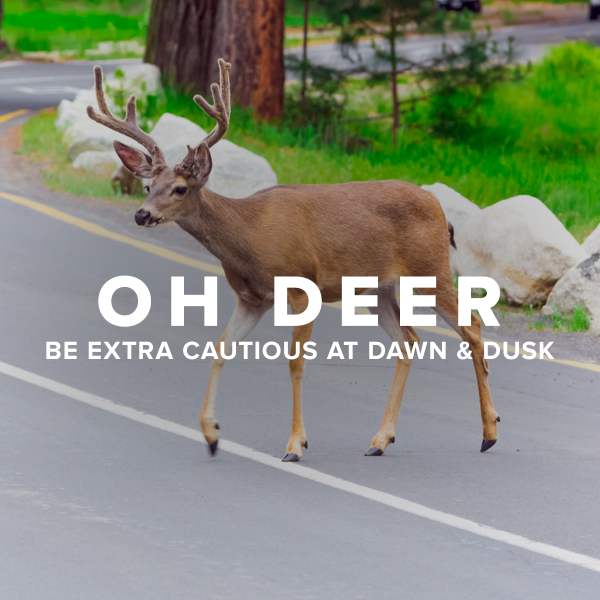Oh Deer! New York Car-Animal Crashes Peak in Autumn
Oh Deer! New York Car-Animal Crashes Peak in Autumn

Opening day of regular season deer hunting is November 21 in most areas of Western and Central New York. Hunting will stir the deer population, which is already active due to mating season. AAA is warning motorists to buckle up, be extra cautious on the roads, and scan for deer and other animals.
AAA analyzed New York crash data and found that October, November and December are by far the peak months for animal crashes, notably deer, in the Empire State. November is typically the most active month of all since it is the height of deer mating season.
There were 36,445 animal-related crashes statewide in 2019 – a 10% increase from 2018 and a by far the most in the past decade - that’s equivalent to one animal-related crash every 15 minutes.
For 49 of New York’s 63 counties, 2019 was the year with the most animal-related crashes in the past decade. AAA analyzed New York State data and here are top 11 counties for animal crashes in 2019:
- Orange (1616)
- St. Lawrence (1513)
- Suffolk (1415)
- Oneida (1291)
- Ontario (1275)
- Jefferson (1252)
- Monroe (1238)
- Dutchess (1170)
- Ulster (1161)
- Onondaga (1107)
- Erie (954)
Motorists should be especially vigilant while driving in the dark as deer crashes often occur outside daylight hours. Most crashes occur in the two hours before sunrise and after sunset each day. Crashes are common from 5 p.m. to 7 p.m.
“Drivers should always be on the lookout for hazards on the road, but the danger of deer increases every fall,” said Michael Treantis, director of insurance at AAA WCNY. “Car-deer collisions can be both deadly and costly. Drivers should pay close attention, avoid distractions and scan the road for deer to reduce the damage from an animal collision.”
AAA offers the following tips for avoiding or mitigating deer crashes:
- Scan the shoulders of the road in front of you. Deer may dash out from the shoulder or wooded areas adjacent to the road. They often travel in herds.
- Follow the speed limit. Lower speed will give you more time to respond to unexpected wildlife movements.
- If a collision is unavoidable, apply the brakes firmly and remain in your lane. Swerving sharply to avoid an animal can often cause a more serious crash.












